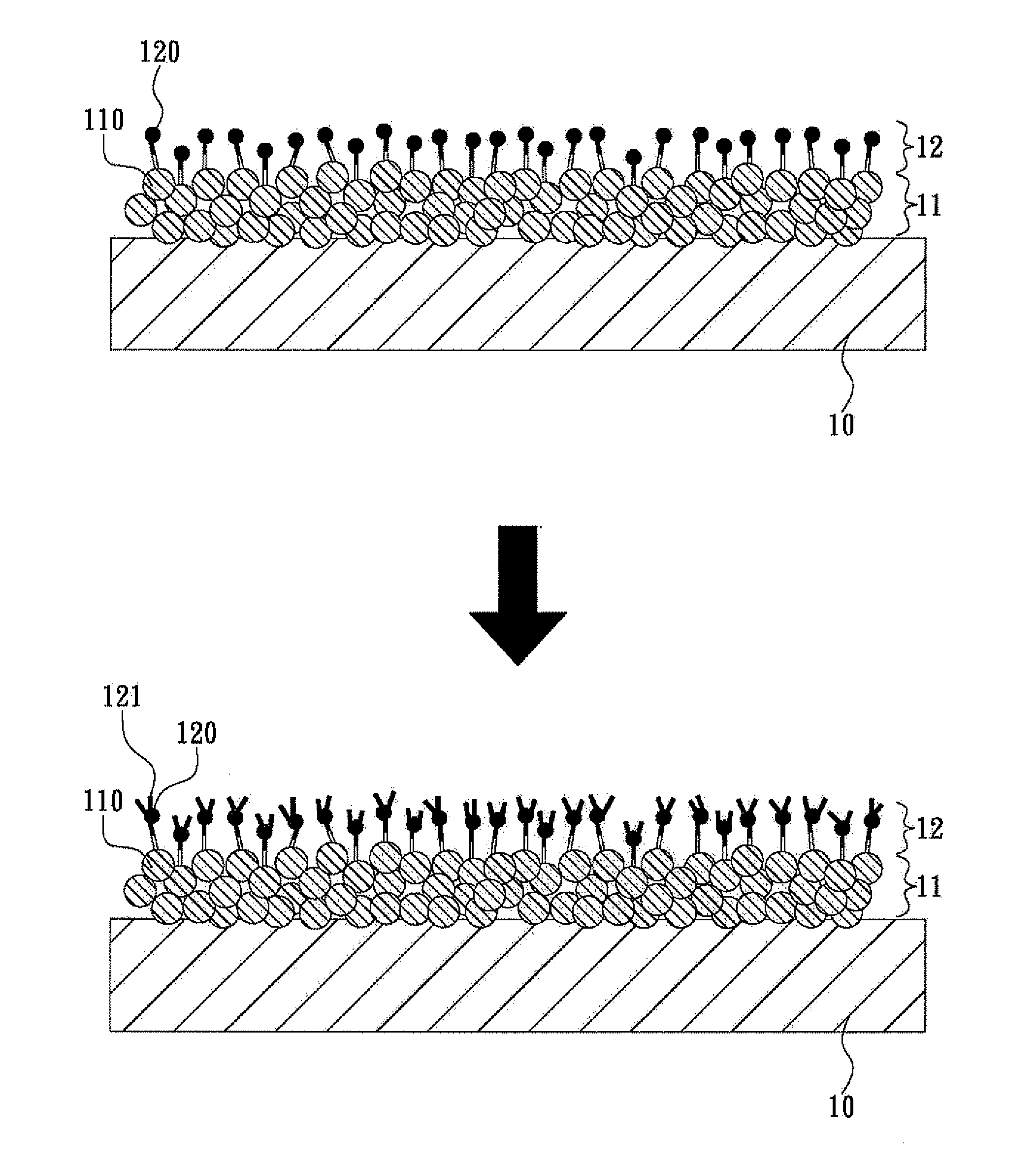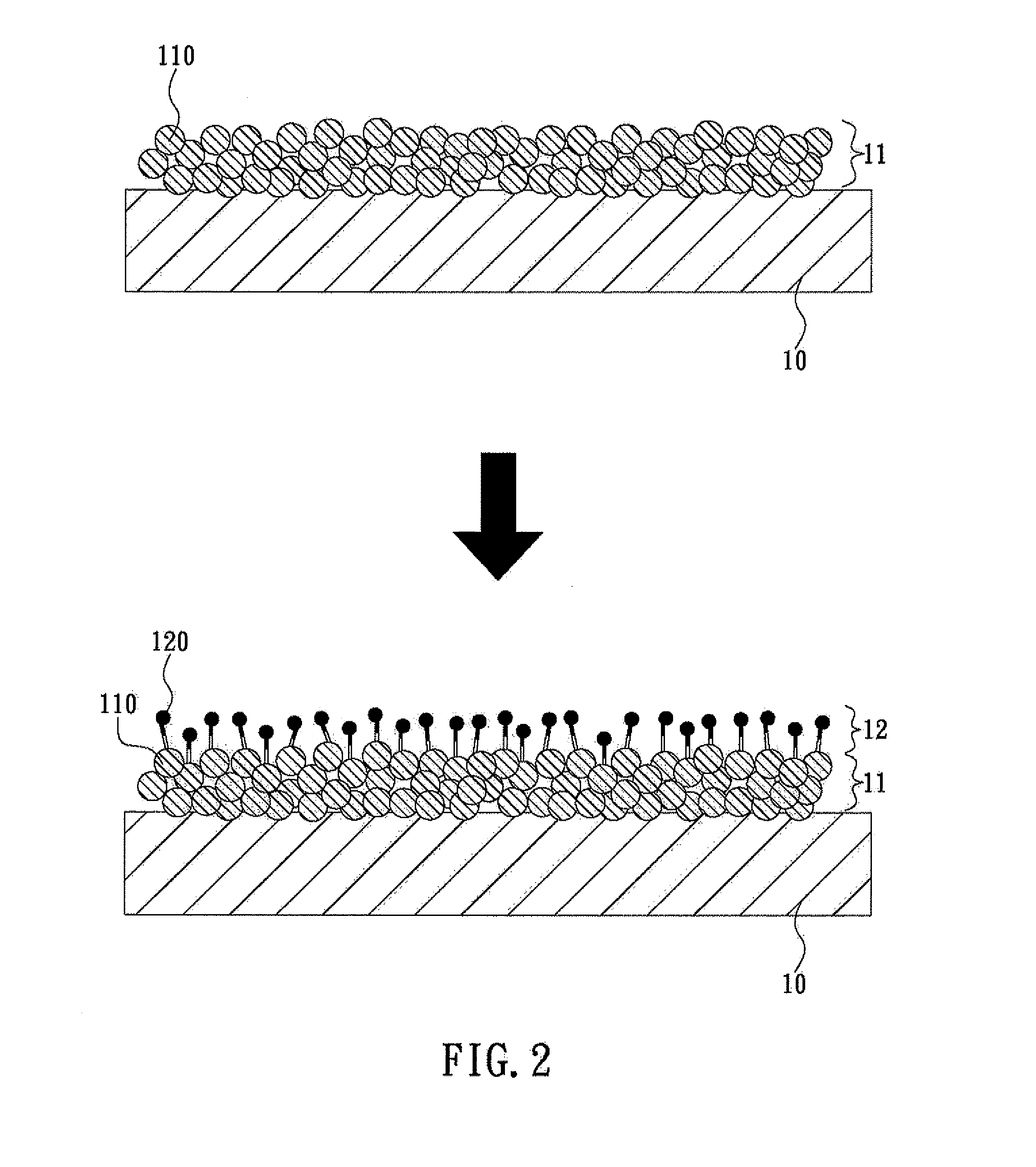Method for forming compound epitaxial layer by chemical bonding and epitaxy product made by the same method
a compound epitaxial layer and chemical bonding technology, applied in the direction of crystal growth process, polycrystalline material growth, semiconductor/solid-state device details, etc., can solve the problems of low binding strength of mbe product between epitaxial layers, insufficient high vacuum, and delamination of epitaxial layers, etc., to achieve sufficient binding strength and increase product yield
- Summary
- Abstract
- Description
- Claims
- Application Information
AI Technical Summary
Benefits of technology
Problems solved by technology
Method used
Image
Examples
Embodiment Construction
[0022]The inventor of the present invention has long been engaged in research, development and designing in epitaxy-related fields. In the process, the inventor has found that so far mirror-like planar crystals cannot be made epitaxially without using MBE. However, not only is MBE costly, but also the epitaxial layers formed by MBE are bound together by physical contact, whose binding strength is low; as a result, delamination may occur, and low product yield follows, which is highly undesirable. Although attempts have been made in search for improvement, an ideal solution has yet to be found. In consideration of this, the inventor came up with taking advantage of the properties of dangling bonds and using an unsaturated ionic bond layer to realize chemical bonding between a contact layer and a compound epitaxial layer. Thus, by increasing the binding strength between the layers, delamination can be effectively prevented.
[0023]The present invention discloses a method for forming a c...
PUM
| Property | Measurement | Unit |
|---|---|---|
| Temperature | aaaaa | aaaaa |
| Amphoteric | aaaaa | aaaaa |
Abstract
Description
Claims
Application Information
 Login to View More
Login to View More - R&D
- Intellectual Property
- Life Sciences
- Materials
- Tech Scout
- Unparalleled Data Quality
- Higher Quality Content
- 60% Fewer Hallucinations
Browse by: Latest US Patents, China's latest patents, Technical Efficacy Thesaurus, Application Domain, Technology Topic, Popular Technical Reports.
© 2025 PatSnap. All rights reserved.Legal|Privacy policy|Modern Slavery Act Transparency Statement|Sitemap|About US| Contact US: help@patsnap.com



